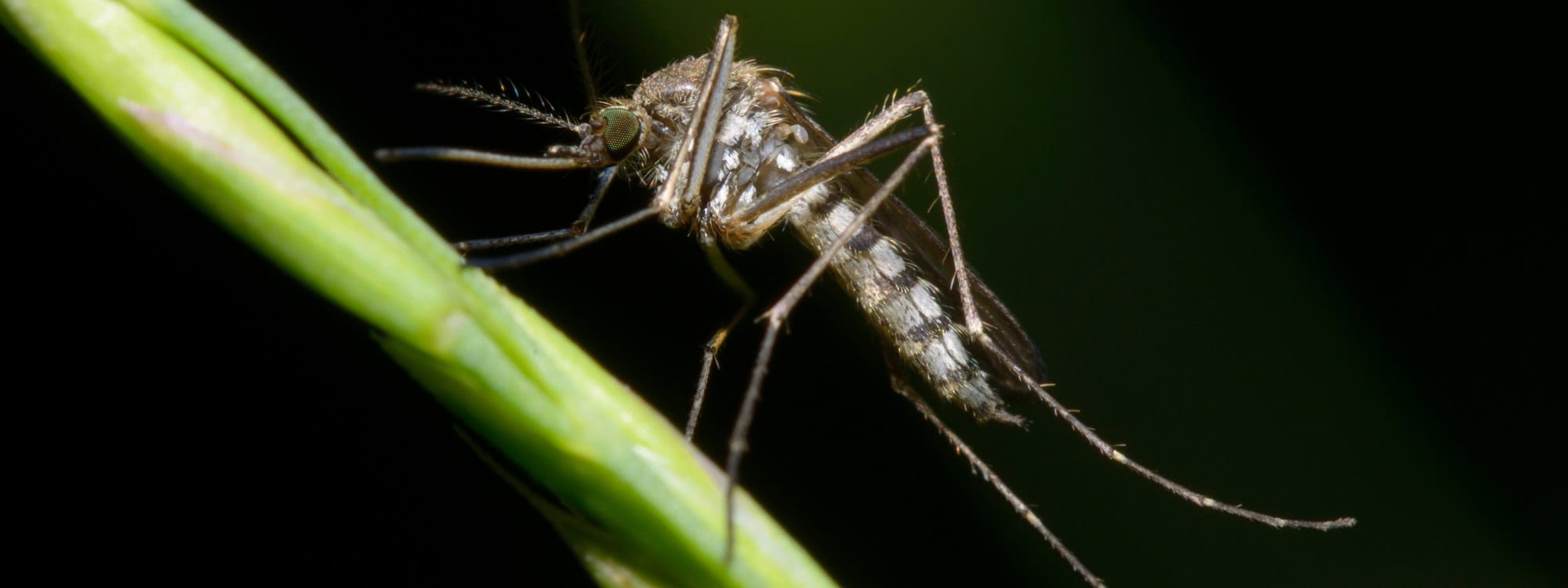Ochlerotatus Mosquitoes
Identification: Ochlerotatus mosquitoes are small to medium-sized insects, typically measuring between 4 to 8 mm in length. They are often recognized by their dark, mottled brown or black coloration and distinctive white markings on their legs and thorax. These mosquitoes have a more robust body compared to Aedes mosquitoes, and their wings are usually covered with small, scale-like patterns. Their appearance can vary slightly by species, but the general markings and stout build are key identifiers. Their bites can be irritating and cause itching, similar to other mosquito species.
Habitat: In Muskoka, Ochlerotatus mosquitoes prefer a variety of aquatic environments for breeding, including both natural and artificial water sources. They are commonly found in temporary water bodies such as rain-filled ditches, tire treads, and discarded containers. Additionally, they can breed in more permanent water sources like ponds and marshes if conditions are favorable. Their ability to thrive in diverse water settings makes them adaptable and widespread in both urban and rural areas.
Diet: Female Ochlerotatus mosquitoes feed on blood to acquire the necessary proteins for egg development. They typically target mammals, birds, and occasionally reptiles for their blood meals. Both males and females rely on nectar and plant juices for their daily nourishment. The feeding behavior of Ochlerotatus mosquitoes is largely driven by reproductive needs, and their bites can lead to discomfort and itching.
Behavior: Ochlerotatus mosquitoes are primarily active during dawn and dusk, although some species may also be active during the day. They are known for their aggressive feeding habits and can be persistent in their search for a blood meal. These mosquitoes can be a nuisance due to their biting behavior, and they are potential vectors for various diseases, including eastern equine encephalitis and other arboviruses. Their activity patterns and aggressive nature make them a target for mosquito control measures.
Prevention: To prevent Ochlerotatus mosquito infestations, it’s crucial to manage and eliminate potential breeding sites around your property. This involves regularly emptying and cleaning containers that collect water, such as bird baths and planters, and ensuring that ditches and other water sources are properly maintained. Utilizing mosquito repellents, installing screens on windows and doors, and applying targeted insecticides can help reduce mosquito activity.
Control: Effective control of Ochlerotatus mosquitoes involves a combination of source reduction and targeted treatments. This includes eliminating or treating standing water with larvicides to prevent mosquito larvae from maturing and applying adulticides to reduce the population of adult mosquitoes. Consistent monitoring and maintenance are essential to manage these pests and minimize their impact on your outdoor environment.
For comprehensive Ochlerotatus mosquito control, Bug Free Muskoka’s Mosquito Control program offers seasonal services from May to September, including thorough property inspections, source reduction, and barrier treatments every 21 days. We also provide organic and no-spray options to offer safe and effective mosquito control solutions for your family and pets. Bug Free Muskoka helps ensure a more comfortable and mosquito-free environment for you and your family.

